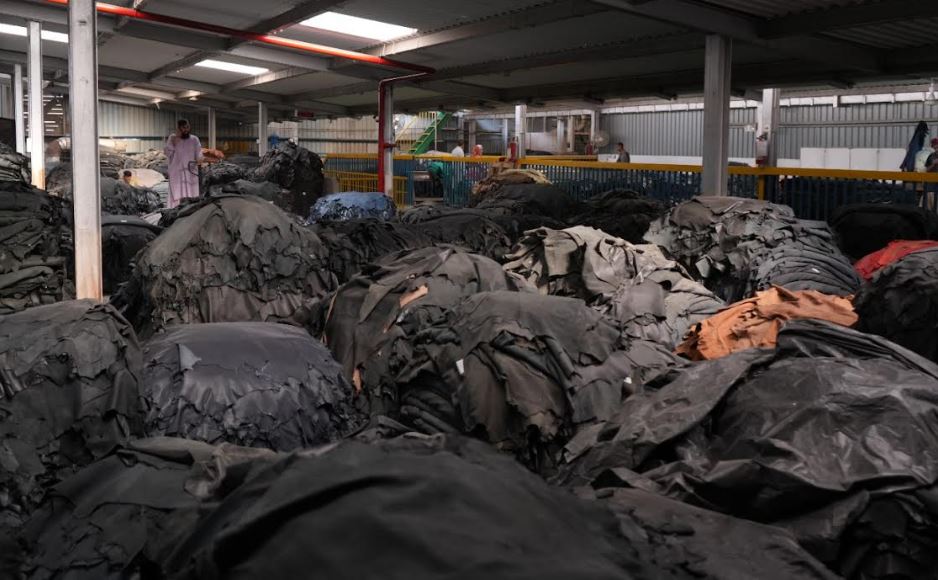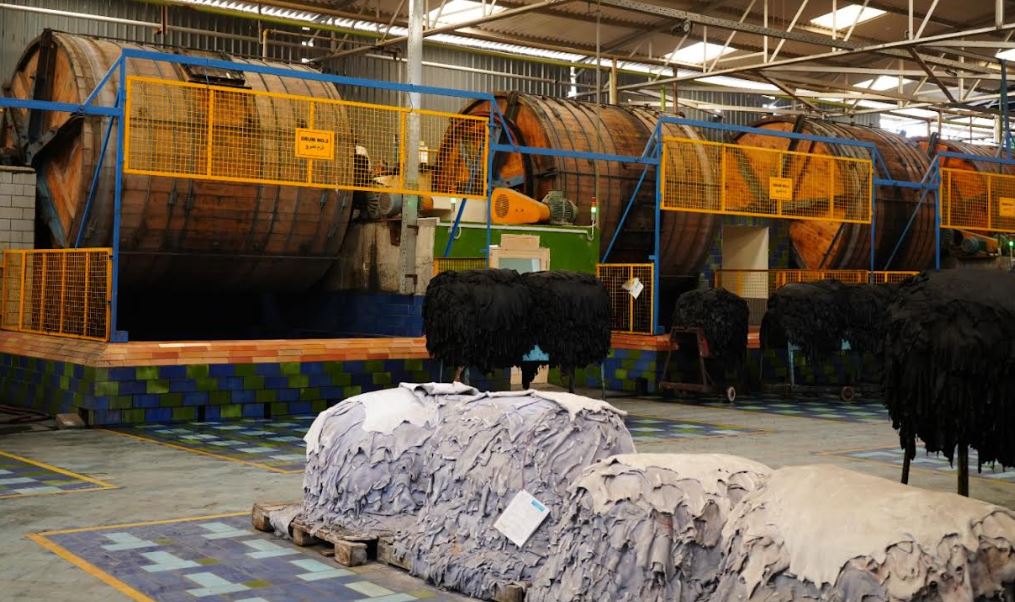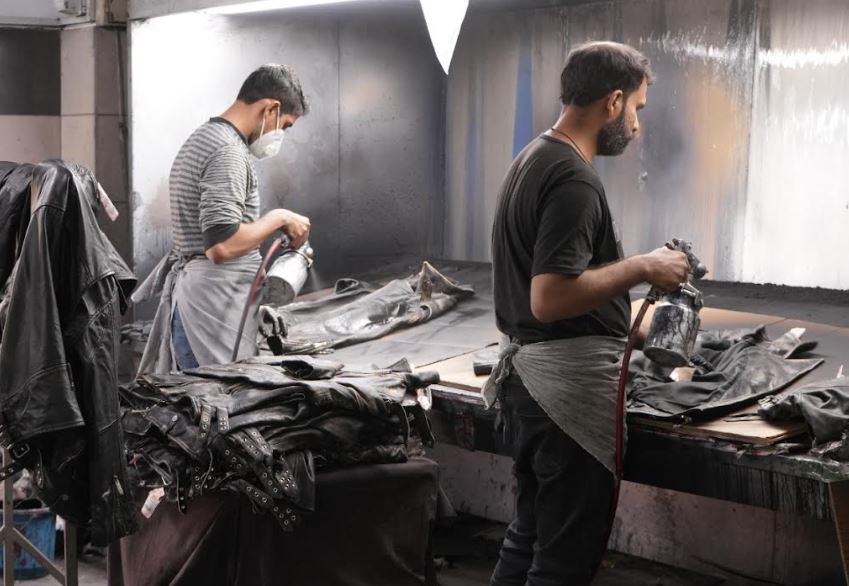
The Best Leather Jackets for Men (Winter 2024-2025)
November 18, 2024
The Historical Evolution of Leather Jackets in Fashion
November 18, 2024Leather tanning is the process of transforming raw animal hides into durable and flexible leather, making it suitable for a variety of uses like clothing, footwear, upholstery, and accessories. This transformation involves treating the hides to prevent decomposition, enhance durability, and improve their physical and aesthetic properties. The process can be classified into several types depending on the methods and chemicals used.
What is Leather Tanning?
Leather tanning is a “fundamental process in the leather industry that stabilizes the protein structure of hides, making them resistant to decay, water, and mechanical damage,” according to Wikipedia.org. This process not only extends the lifespan of leather but also enhances its texture, color, and flexibility, making it a valuable material for various applications.

The term “tanning” comes from the Latin word “tannum” (oak bark) and has ancient origins. Evidence of tanning dates back to 7000 BC in Mehrgarh, Pakistan, and was used by the Sumerians around 2500 BC.
Traditionally, tanning was known for its strong odors and typically took place in the outskirts of towns, often in poorer neighborhoods. Initially, hides were soaked to soften them before tanners scraped off fat and tissues.
The depilation involved soaking hides in solutions of urine, lime, or salt, contributing to unpleasant smells. After depilation, the hides were softened further by pounding with animal dung or brains, using bacterial enzymes for effective treatment.
Types of Leather Tanning
- Vegetable Tanning
Vegetable tanning uses natural tannins found in plant materials like tree bark, leaves, and fruits. This method produces leather with a warm color and firm texture, known for being eco-friendly, although it takes longer than other methods.
- Chrome Tanning
Chrome tanning uses chromium salts, primarily chromium sulfate, to produce soft, flexible leather that is resistant to water and heat. This method is quicker and commonly used for high-demand leather products but raises environmental concerns due to chromium waste.
- Aldehyde Tanning
Aldehyde tanning uses compounds like glutaraldehyde or oxazolidine to create chrome-free leather, often used for automotive and baby products due to its softness and hypoallergenic properties.
- Synthetic Tanning
Synthetic tanning employs synthetic agents like phenol and acrylamide derivatives to provide uniform color and properties. It is often combined with other tanning methods to improve the quality of the leather.
- Natural Tanning
Natural tanning, often called vegetable tanning, uses tannins derived from plant sources such as tree bark, leaves, and fruits. This method is valued for its environmental sustainability since it does not use synthetic chemicals or heavy metals.
- Tawing
Tawing is a traditional method of tanning hides using mineral salts, typically alum (potassium aluminum sulfate), to turn raw animal hides into white, flexible leather. Unlike other tanning methods, tawing does not use tannins or heavy metals, giving it a unique approach and specific characteristics in the finished leather.
Leather Tanning Process
The leather tanning process involves several key stages, each crucial to transforming raw hides into high-quality leather. These steps ensure that the leather becomes durable, flexible, and suitable for a range of uses. The process can be divided into three main phases: preparation, tanning, and post-tanning.

1. Preparation
The preparation phase is essential for cleaning and conditioning hides before the actual tanning begins.
- Soaking: Hides are soaked in water to clean and soften them. This step removes dirt, blood, and other impurities from the hides.
- Liming: Hair and epidermis are removed using a lime solution. This process also opens the collagen fibers in the hide, making them more receptive to tanning agents.
- Fleshing: Excess flesh and fat are mechanically removed. This step ensures the hides are clean and uniform, providing a better surface for tanning.
2. Tanning
The tanning phase involves treating hides with various agents to stabilize the collagen fibers, making the leather durable and resilient.
- Deliming and Bating: The pH of the hides is adjusted, and enzymes are used to further clean and soften them. This step neutralizes the lime and removes residual proteins.
- Pickling: Hides are treated with acid and salt to prepare them for tanning. This ensures the hides have the correct pH level to accept the tanning agents.
- Tanning: Hides are immersed in tanning agents, which can be vegetable, chrome, aldehyde, or synthetic. This process stabilizes the collagen fibers, giving the leather its durability and resistance to decay.
3. Post-Tanning

The post-tanning phase enhances the leather’s properties, ensuring it meets the desired specifications for various uses.
- Neutralization: Excess acids or bases are neutralized. This step ensures the leather has a stable pH level and prepares it for further treatments.
- Retanning, Dyeing, and Fatliquoring: Additional chemicals are added to achieve the desired color, softness, and waterproof properties. Retanning improves leather handling, dyeing gives it color, and fatliquoring adds oils to make the leather soft and flexible.
- Drying and Finishing: Leather is dried, conditioned, and finished to enhance its appearance and physical properties. This may include polishing, embossing, and coating. These finishing processes enhance the texture, durability, and visual appeal of the leather.
NOVIDO combines both traditional and modern tanning techniques to create high-quality leather jackets for men and women.
Related Article:




